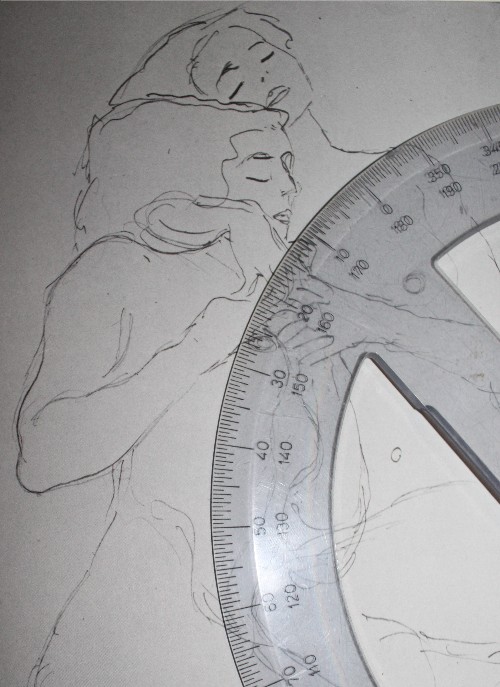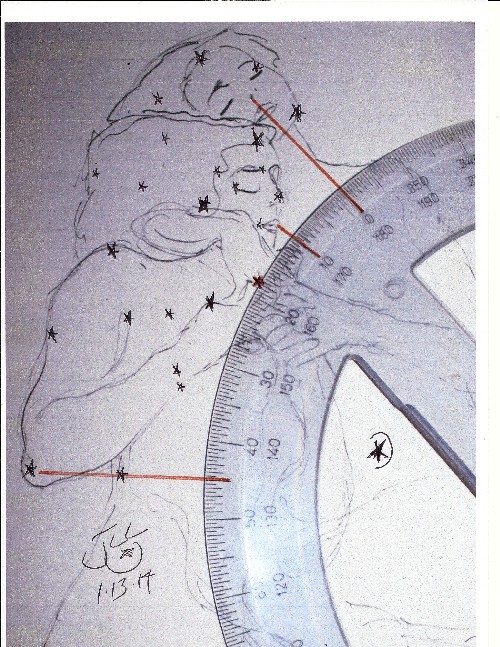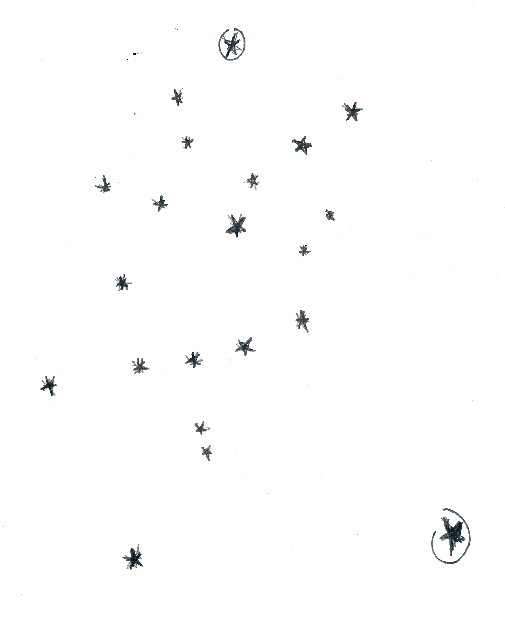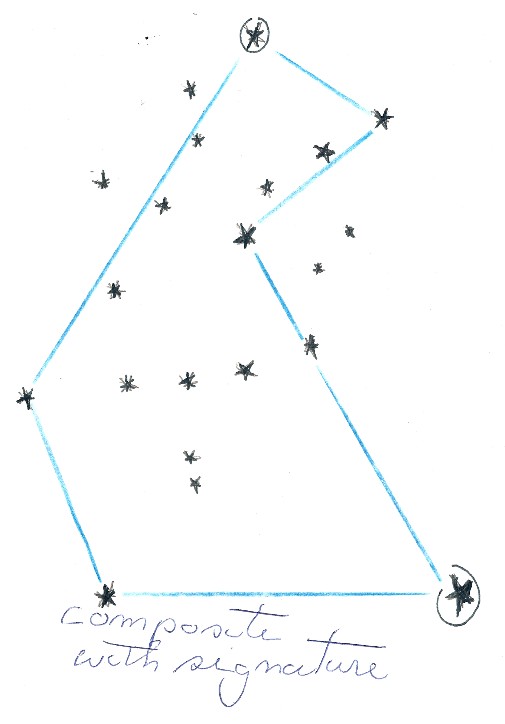Aimed and dedicated lovers of Sophia's Dreaming, dream lovers randomly adrift in the cosmos, paired and unpaired, and solitary souls lost in the sauce, I welcome you all to Celestics, the new feature of metahistory.org, added January 13, 2014
On this page I present a series of recorded talks (mp3 files), listed in chronological sequence (read from above, most recent, to below, posted earlier), illustrations and diagrams relative to the theme and content of the talks, and other links to astronomical and astrological material on this site and elsewhere. You may consider my book Quest for the Zodiac (1999) as companion reading for these talks.
As the talks develop, I will compile and update a GLOSSARY of essential terms to be learned by aspiring celesticians. New word, there. Consider a celestician (SELL-ess-TISH-shun) like a statistician who works with the data of the cosmos, including terrestrial, solar, lunar, plantary and sidereal cycles, and combines imagination with that data in order to read the glittering codebanks of the night sky.
starry regards,
JLL
January 12-13, 2014
[1] Celestics - Introduction to Forensic Astronomy

Two Girls, c. 1913. Line drawing by Gustav Klimt. Overlay of a circular ruler calibrated into 360 marks. Some details of the drawing are situated on the RIM of the ruler, hence "rim-sited". Other details are situated outside or inside the boundary of the ruler: peripheral, or "off-sited" -- an allusion to "off-sided", meaning off to one side or another of the defining RIM.
Variation (below) with lines showing off-sited alignment to RIM calibrations and placing stars at distinctive places in the graphic composition.

NOTE: Same graphics with alignments to the RIM, now with stars inserted. One star at the 18 mark on the circular ruler is rim-sited, exactly on the edge of the calibrated dial. It marks the place where the hands of the two girls are joined, their fingers gingerly intertwined. Other stars located peripherally and aligned to marks on the RIM call attention to details of Klimt's exquisite rendering: elbow, upper lip, eye, etc. Superposition of stars on the graphics connects the features of the artwork to the calibrated dial in an extremely precise way. For instance, the large star marking the navel of the girl behind plots to the 40 mark (ecliptic longitude 40 degrees: 10 degrees of the sign Taurus). The navel star of this "heavenly body" is off-sited, sitting at a notable distance below the RIM, within the zone of the circular ruler.
The star on the forehead of the girl behind is equally off-sited, but in the other direction, above or outside the RIM. Visually extend your line of sight to her nostril and you can easily place the forehead close to the same alingment, but slightly off to the left. This being so, it would have greater longitude: about 1-2 degrees. Hence the forehead star can plotted from the 2-3 mark on the calibrated ruler: 2-3 degrees of the sign Aries.
Careful plotting of the Real-Sky Zodiac by recording exact star alignments relative to the visualized features -- called stellography -- is one of the fine arts of celestics.
The precision of these alignments can be impressive. Note that in the talk I say that the 0-1 degree mark on the ruler aligns perfectly to the left nostril of the girl behind. That was an estimate by line of sight. Upon application of a strait-edge, you will see that the 0-1 mark (1st degree of ecliptic longitude) aligns to her right nostril. Be not concerned, star-riddled child! Just wait 72 years and the left nostril will be aligned to the 0-1 mark! Why? Because the circular plate of the calibrated ruler is not fixed in place: the entire dial rotates in a clockwise direction, shifting one degree or mark every 72 years. The alignment that now (2014) goes directly to the right nostril will in 72 years (2086) go to the left..
But I anticipate... The heady subject of "precession of the equinoxes" belongs to a rather more advanced stage of these lessons.
[2] Quest for the Zodiac
January 14, 2014
[3] The Real-Sky Zodiac
Klimt line drawing of "Two Girls" represented as a composite, a loose group of stars in the sky observable without scanning the eyes.

Below: the same loose collection of stars with "signature" applied. Upon repeated observation, the eye recognizes the composite by its signature. NOTE: With the signature, there is still no graphic or pictorial content superimposed on the star-pattern being observed. The graphics must be added by an act of imagination. Intentional design!

From Quest for the Zodiac:
Two modern authorities on the Zodiac, Wil Tirion and George Lovi (Men, Monsters and the Modern Universe), compare picturing the Constellations to a child's act of seeing a puppy in the passing clouds. One is immediately reminded of a line from Shakespeare, when Hamlet contemplates the shape of a passing cloud and muses, ‘How very like a whale.’
Tirion and Lovi's interpretation might be called the How-Very-Like-A-Whale Theory of Zodiacal visualization. It is a fine instance of mental bias among experts. This explanation of the pictorial versions of the Constellations is as trite as the puppy-clouds it cites. It totally ignores what psychology and anthropology teach us about the powers of human imagination. While it is not the business of astronomers to be informed on imaginal psychology, they ought to admit their ignorance of it rather than pronounce silly opinions as Tirion and Lovi do.
The point that refutes the How-Very-Like-A-Whale Theory ought not to have escaped Tirion and Lovi, if they are veteran stargazers. Except for a couple of cases, the mythic images assigned to the Constellations do not match the composite stars. Only with difficulty and perhaps resistance does one arrive at seeing the Crab in its composite stars, or the Archer or the Goatfish or almost any of the others. How very unlike a whale, or anything but a huge sprawling V, is the visual composite of the Fishes. Almost none of these ‘animals’ can be pictured as a child sees the shapes of cuddly creatures in passing clouds.
|
ZODIAC derives from the Greek, zodiakos kyklos, usually translated as "circle or belt of animals." There must be something wrong with this translation, however. It simply does not fit the phenomenon it names. The Real-Sky Zodiac is not a Disneyesque display of animal crackers in the sky. Perform a quick scan of the full panorama of thirteen star-patterns on the path of the sun, and how many animals do you discover? Count 'em and weep.
[4] Signs and Constellations
[5] The Language of Destiny - 21 January 2014
This talk refers to the writing on the rim of the Grail, and the astronomical dimensions of initiated instruction concerning human character and destiny, adumbrated in Book Nine of Wolfram von Escheach's Parzival.
"Innocence is reckless." You find this proposition illustrated in the 22nd card of the Major Turmp of the Tarot: Le Fou, The Fool, often numbered 0. The Fool stands outside the three ranks of seven cards arranged in the three-level format of the Major Arcana. In the Shakti Cluster Divination Deck, an accessory of Planetary Tantra received in August 2008, the Fool represents the Anthropos, "that luminous child".
If you must be reckless in innocence, be wise in desire. Or at least try to be. Desires may be managed wisely, though never entirely, but innocence is fundamentally reckless -- look at children and adolescents! Yet in your innocence abides your divinity. "Nothing befalls your innocence.' This is the adage for 1-1, first throw of the Kali Dice Oracle, another accessory of PT, given with the Terma of Gaia Awakening.
What does this talk about innocence have to do with the language of destiny? After listening to talk #5, you might wish to consider this proposition: Your desires are not originally your own, they are inspired by celestial powers, the Aeons, and they become yours through the process of incarnation -- thus "desire comes from the stars, the constellations." But innocence comes from the Pleroma itself. It is at the source of human divinity. The supreme realization of human experience in the Aeonic experiment might reside in this qualification: to live your desires innocently, but, at the same time, be wise in how you handle them.
Such, at least, are some reflections that might be derived from this talk...
In passage of command,
JLL

Some days I don't know whether to laugh or cry. So I do both at the same time. JLL January 2014
[6] Astrological Schools - 23 January 2014
This talk covers some events in my life in a loose chronology, presenting key moments of insight and technical breakthroughs in the development of Real-Sky astrology and Star Base. With primary focus on events extending from 1969 to 1979.To be continued in CT 7 - below
[7] The Challenge of Star Base
Loading - internet is slow and will not complete transfer of file 1/25 5 PM
Further lessons continue on page 2 of Celestics, beginning with CT 8 The Worst of It


